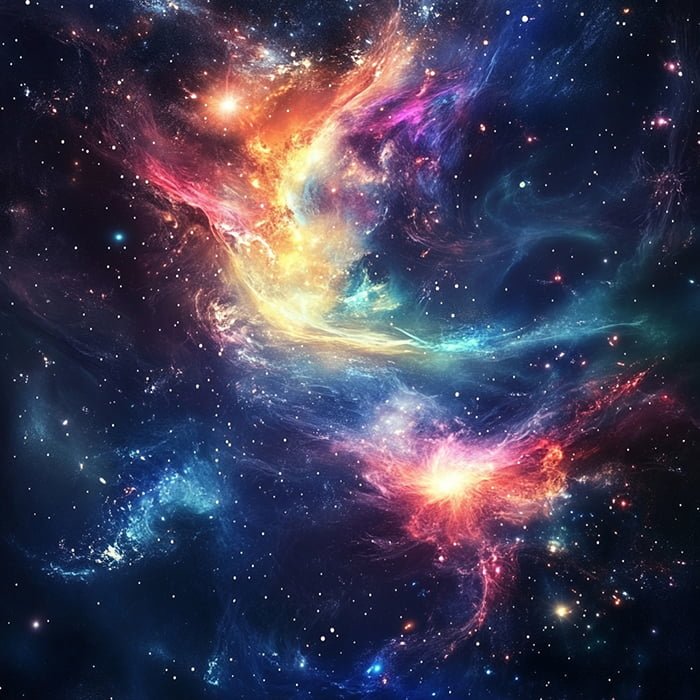The multiverse theory proposes multiple universes beyond ours, influencing science and philosophy. It includes models like bubble universes and many worlds.
Key Takeaways 📝
- The multiverse theory suggests that our universe is just one of many, challenging traditional notions of reality and existence.
- A surprising aspect is the idea that the existence of life could be a significant piece of evidence supporting the multiverse, as it may explain why physical constants are fine-tuned for life.
- Some scientists argue that the multiverse is more philosophical than scientific, raising debates about its validity and implications.
- The theory has practical implications, influencing fields like cosmology and quantum mechanics, and prompting new ways to think about the universe and our place in it.
- Ultimately, the multiverse theory invites readers to reconsider their understanding of existence, identity, and the nature of reality itself.
The question of what lies beyond the universe has intrigued scientists, philosophers, and the general public for centuries. The concept of a multiverse, which suggests the existence of multiple, possibly infinite, universes, is one of the leading theories that attempt to answer this profound question. This report synthesizes key points from various sources to provide a comprehensive overview of the multiverse theory and its implications.
The Multiverse Concept
Definition and Scope
The multiverse is a hypothetical set of all possible universes, including everything that exists: space, time, matter, energy, information, and the physical laws and constants that describe them. These universes are often referred to as ‘parallel universes’ or ‘alternate universes. The idea has historical roots, with discussions dating back to Greek philosophy. The notion of a multiverse challenges our understanding of reality and suggests that our universe might be just one of many.
Scientific and Philosophical Perspectives
The multiverse theory is both supported and criticized within the scientific community. Some physicists argue that it is more of a philosophical notion because it cannot be empirically falsified. Despite this, many modern scientists, including prominent figures like Stephen Hawking and Neil deGrasse Tyson, support various multiverse hypotheses. Conversely, skeptics like Sabine Hossenfelder and Roger Penrose question its scientific validity. The debate continues as new theories and evidence emerge, pushing the boundaries of our understanding of the cosmos.
Types of Multiverse Theories

Levels of Multiverse
Several models categorize the multiverse into different levels:
- Level 1: Infinite Space – This theory posits that if you travel far enough, you will eventually encounter regions of space that are exact replicas of our own due to the infinite nature of space. This concept is based on the idea that the universe is infinitely large and that every possible configuration of particles will eventually repeat.
- Level 2: Bubble Universes – In this model, regions of space undergo continuous inflation, creating ‘bubble universes’ that are separate from our own. Each bubble universe could have different physical constants and laws, making them distinct from one another.
- Level 3: Many Worlds Interpretation – This theory arises from quantum mechanics, suggesting that every quantum event spawns a new universe, leading to a vast number of parallel universes. This interpretation implies that all possible outcomes of quantum events are realized in separate universes.
- Level 4: Ultimate Ensemble – Proposed by Max Tegmark, this level includes all universes that can be described by different mathematical structures, even those that do not obey the fundamental laws of nature. This theory suggests that mathematical existence is equivalent to physical existence.
Other Theories
- Eternal Inflation – This theory suggests that our universe is part of an infinite sea of inflating space, with individual universes ‘pinching off’ from larger inflating regions. This process could create an infinite number of universes, each with its own distinct properties.
- Shadow Matter – This concept involves a form of matter that is undetectable except through its gravitational effects. Shadow matter could exist in parallel universes, interacting with our universe only through gravity.
Evidence and Controversies
Supporting Arguments
The existence of life, particularly intelligent life capable of making cosmological observations, is considered one of the biggest pieces of evidence for the multiverse. Some researchers are looking for physical evidence, such as specific types of black holes that could indicate the presence of other universes. Theories like cosmic inflation and the Big Bang also lend support to the multiverse concept. The idea that our universe is just one of many could explain the fine-tuning of physical constants that allow for the existence of life.
Counterarguments
Critics argue that the multiverse theory lacks empirical evidence and is not falsifiable, making it more of a philosophical idea than a scientific hypothesis. The application of Occam’s razor, which favors simpler explanations, is also a point of contention among scientists. Some argue that the multiverse theory complicates our understanding of the universe without providing testable predictions.
Philosophical and Cultural Implications
The idea of multiple universes has significant philosophical implications. Some philosophers, like David Lewis, argue that all possible worlds exist and are just as real as our own. The concept also appears in various cultural and fictional contexts, enriching our understanding of reality and existence. The multiverse theory challenges our perception of reality and raises questions about the nature of existence, identity, and free will.
The multiverse theory offers a fascinating and complex answer to the question of what lies beyond our universe. While it remains a controversial and largely theoretical concept, it continues to inspire scientific inquiry and philosophical debate. As our understanding of the cosmos evolves, so too will our exploration of the multiverse and its potential realities. The question of what is beyond the universe remains one of the most profound mysteries of our time, driving us to explore the limits of our knowledge and imagination.
























